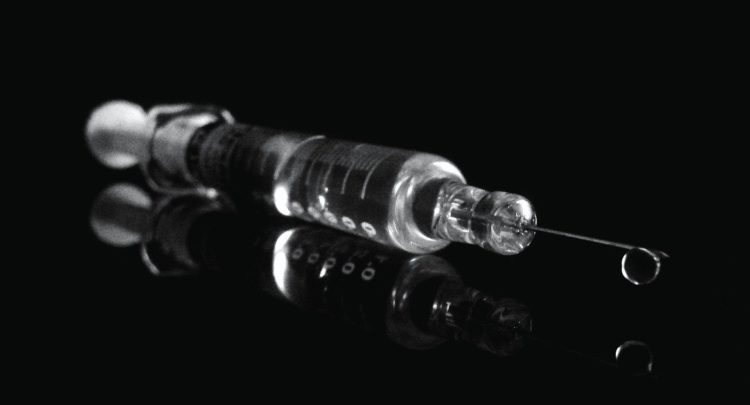 Dec. 9. By Novant Health. Despite what you may have heard or read about anti-vaccine campaigns in recent years, Americans have overwhelmingly rejected the movement, particularly when it comes to protecting children.
Dec. 9. By Novant Health. Despite what you may have heard or read about anti-vaccine campaigns in recent years, Americans have overwhelmingly rejected the movement, particularly when it comes to protecting children.
While childhood vaccination coverage has dipped since 2011, it remains well above 90% both nationally and in the Carolinas.
This makes perfect sense, since childhood immunization has proven so effective at protecting children against everything from mumps (78% effective) and whooping cough (75-80% effective) to polio (90% effective), measles (95% effective) and diphtheria, chickenpox and rubella (95% effective).
In fact, vaccines have been preventing illness and death since the early 1800s. Smallpox, which by some estimates killed 300 million people in the 20th century, was declared eradicated by the World Health Organization (WHO) in 1980.
In the United States wide public adoption of vaccines has also helped eradicate yellow fever, malaria and polio, and is well on its way to eliminating other infectious diseases. Since 2015, U.S. authorities have approved vaccines for malaria, dengue and Ebola.

Dr. Charles Bregier
The WHO estimates immunization now prevents an estimated 2 million to 3 million deaths every year. And don’t forget the annual flu vaccine, which prevents countless hospitalizations.
“The truth that vaccines are very safe and very helpful,” said Dr. Charles Bregier, Novant Health medical director of corporate health. “And if you look over the history of vaccine development through the last hundred 150 years, it’s really come a long way with a tremendous emphasis on safety, and extensive studies that are done to make sure that they’re safe.”
As the world begins to line up for the COVID-19 vaccine, consider the impact of the following vaccines:
HiB: You can thank vaccines if you have never heard of HiB, or Haemophilus influenzae type b. The disease can seriously damage a child’s immune systems and cause brain damage, hearing loss or even death. Before a HiB vaccine became available in 1985, the disease killed about 1,000 of the 20,000 kids it infected annually in the United States. It is estimated that HiB vaccines will save the lives of 1.4 million people 2011 to 2020, according to the Centers for Disease Control and Prevention.
DTaP: Since the introduction of this vaccine in 1949, U.S. deaths from tetanus, diphtheria and pertussis (whooping cough) fell from approximately 1,800 a year to zero by 2013. Tetanus, which killed almost 70% of those infected in the 1950s in the United States, killed none of the 26 people infected here in 2013.
Polio: The WHO estimates more than 16 million people have been saved from paralysis because of vaccination efforts against polio. Cases of the disease, fear of which terrorized American families through the 1950s, have declined 99% worldwide since the Global Polio Eradication Initiative was launched in 1988.

This 1960 photograph shows a nurse caring for a patient during a Rhode Island polio epidemic inside an Emerson respirator, often referred to as an iron lung machine. Devices like these were used by polio patients, whose ability to breath thwarted due to paralysis of those muscles needed to complete the acts of inhalation and exhalation. Credit: CDC.
Measles: Within four years of becoming available in 1963, the measles vaccine reduced the number of U.S. infections and deaths from the disease by more than 80%. The WHO estimates the vaccine saved 17 million lives between 2001 and 2014. While cases did spike in the United States in 2019 due primarily to an outbreak in a group of unvaccinated and under-vaccinated residents of New York City, measles has been considered eradicated from the United States since 2000.
Hepatitis B: The hepatitis B virus (HBV is transmitted through infected blood and unprotected sex and can be passed on to infants by infected mothers. HBV can lead to lifelong infections that result in cirrhosis of the liver, liver cancer, liver failure and death. However, childhood HBV vaccines given routinely in the United States since 1994 have proven 95% effective at preventing the infection. These are just some of 14 diseases you almost forgot about thanks to vaccines, according to the CDC.
The fact is that accidents, suicides, homicides and other so-called “external causes of death,” killed nearly 15 times as many children and adolescents in 2018 than the most fatal infectious and parasitic diseases. In other words, motor vehicles, firearms and drugs pose a far greater health threat to our children than microbes.
We have vaccines to thank for that.
—Novant Health / Healthy Headlines
For the latest health news and advice from Novant Health providers, visit: https://www.novanthealth.org/healthy-headlines/




